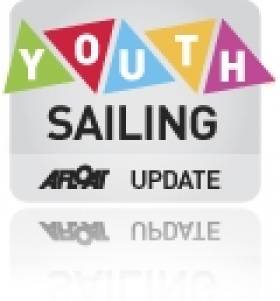Displaying items by tag: YOG
30 Boys Line Up for Second Olympic Sailing Competition
#yog – A fleet of 30 Boys Byte CII's will line up to race on Monday 18 August when sailing commences at the Nanjing 2014 Youth Olympic Games (YOG) but Ireland is not represented because the Byte is not an Irish Sailing Association 'pathway' class but also because there is no budget to send a boy or girl to the YOG event, according to the Irish Sailing Association.
Based on Lake Jinniu in Nanjing 30 boys, aged 15-16, from 30 nations will fly their flag on the Chinese inland waters as they bid to take the honours at the second Youth Olympic Sailing Competition.
Following a continental qualification system the fleet features a diverse mix of young talented sailors. From Algeria, to the Cook Islands, Indonesia and USA the varied mix of nations is unique and across the four Youth Olympic Games fleets, Boys and Girls Byte CII/Techno 293, there are a total of 62 nations competing from 101 possible spots.
The Boys Byte CII fleet is expected to throw out some exceptional competition but the main question on everyone's lips is "Who can beat Hungary's Jonatan Vadnai?"
The Hungarian sailor has been head and shoulders above the pack, literally in many cases, and has 2013 and 2014 Byte CII World titles to his name. At the 2013 Worlds, the first Youth Olympic qualification regatta, the Hungarian took the title convincingly, finishing 19 points ahead of fellow YOG sailor Henry Marshall. A year later he took the title again, sealing the deal with two races remaining.
Despite his dominance the Hungarian remains coy about his chances, "At the World Championships it was strong wind and in Nanjing I think it's going to be light and if it's light wind it will be harder for me and not that easy."
Vadnai has had a busy summer leading up to YOG having competed at the ISAF Youth Sailing World Championship in Tavira, Portugal where he finished seventh, and the Laser Radial Youth Worlds where he finished fifth. With a packed summer of sailing Vadnai feels prepared for China, "Now I'm going to bigger regattas like the ISAF Youth Worlds and I'm getting better at tactics so it doesn't matter what boat I compete in. The Byte is a tricky boat, it's very small and very unstable but I like it very much."
America's Marshall was absent from the 2014 Worlds but pushed the Hungarian in 2013 and they resume their fight in Nanjing. 2013 bronze medallist Pavle Zivanovic (CRO) will also join the pair on the start line as will 2014 podium finishers Scipio Houtman (NED) and Arvid Nordquist (SWE).
The road to Nanjing 2014 began in August 2013 with the Worlds acting as the first qualification regatta. Continental Championships in Europe, North America, South America, Asia, Africa and Oceania followed ensuring a strong blend on nations.
Paul de Souza (BAH) set out on mission to qualify for YOG and after falling short at the 2013 Worlds he took to the North Americans where he faced some nervy times, "I worked really hard to try and qualify for the Youth Olympic Games. I went to two different regattas and didn't quite make it the first time. The second time I managed to qualify in the third spot and I'm pretty proud of myself, I didn't expect to qualify because a lot of the kids I was sailing against I'd never beaten before. I was quite glad to see that I made it."
The 101 sailors will stay in the Athletes' Village and get a first-hand experience of the Olympic Games and de Souza is looking forward to the whole package, "I will just be really proud to be representing my country and to see my other competitors are there sailing and to see other competitors from my country in other sports. I will be glad to be up there with them at the opening ceremony."
Chile's Clemente Seguel was able to qualify his nation at the South American Championship alongside Brazil's Pedro Correa and Peru's Angelo Giuria. The Chilean had an exciting start to YOG when the whole team met Chilean President Michelle Bachelet for the official farewell. With the formalities done Seguel is ready and up for the challenge, "I have been training in the gym everyday from Monday to Friday and sailing at the weekends.
"You have to race with the wind you have. If there is light winds then that's something I am not worried about although I do prefer stronger winds. I know that in China we will have light winds so we need to get used to this and mentally prepare and start training for those conditions."
Olympic spirit and Olympic values will be key focal points for the young sailors and Seguel will use the event as a springboard, "Competing with the best sailors in the world in the Youth Olympic Games is a motivation to get to the Olympic Games in the future. I am very happy and excited because this high level championship is really important for your sailing curriculum vitae and experience."
The Opening Ceremony on Saturday 16 August will officially kick off the Nanjing 2014 Youth Olympic Games. The sailing competition begins on 18 August at 11:00 local time and will conclude on 23 August.
The four YOG Sailing events are:
Boy's Windsurfer – Techno 293
Girl's Windsurfer – Techno 293
Boy's One Person Dinghy – Byte CII
Girl's One Person Dinghy – Byte CII
The YOG Sailing Competition will consist of an opening series and final race. The format will be fleet racing but slalom racing may be run for the Boy's and Girl's Windsurfers if the weather conditions are suitable.





























































